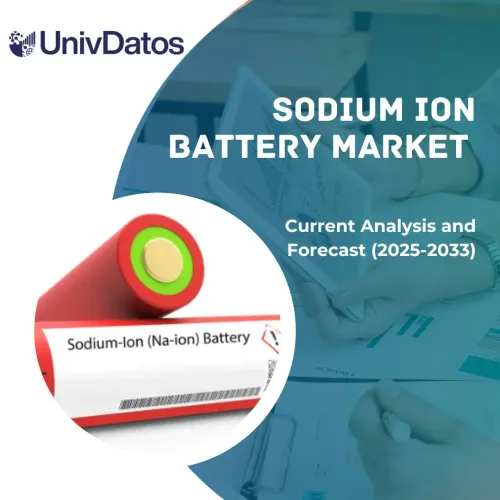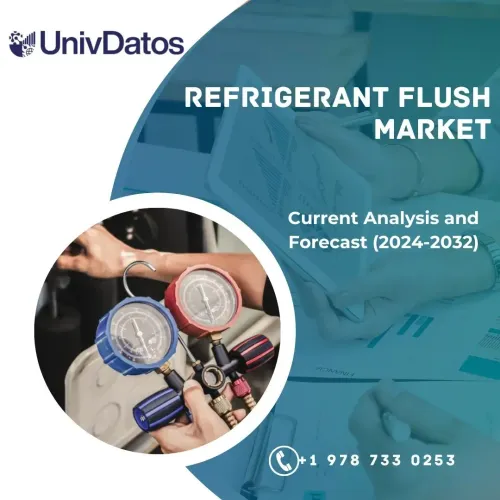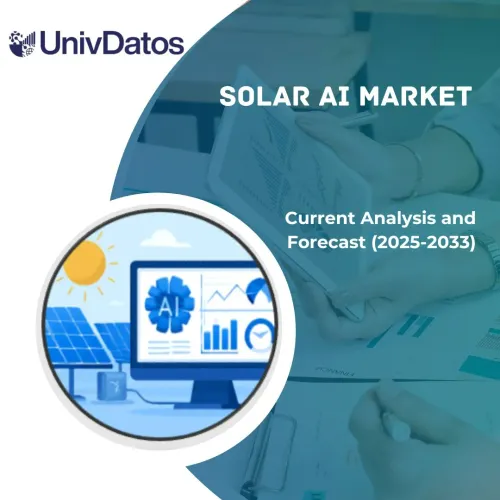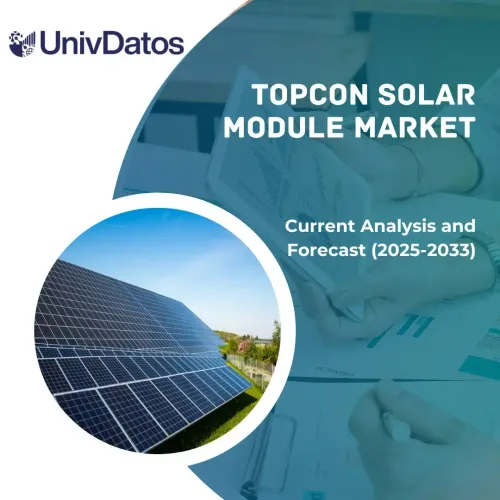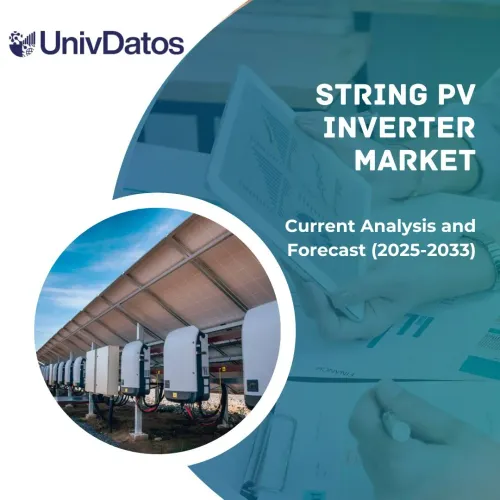- Home
- About Us
- Industry
- Services
- Reading
- Contact Us
IoT in Oil & Gas Market: Current Analysis and Forecast (2020-2030)
Emphasis on Solution (Sensing, Communication, Cloud and Edge Computing and Data Management), Industry Stream (Upstream, Midstream, and Downstream), Application (Fleet and Asset Management, Preventive Maintenance, Pipeline Monitoring, Security Management, and Others), and Region and Country

The IoT in Oil & Gas market is expected to grow at a strong CAGR of 9.8% during the forecast period (2020-2030). IoT in oil and gas industry caters to considerable demand across the globe and is expected to have an influential market growth in the forecasted period. It is mainly owing to the factors such as the Internet of Things (IoT), as a system integrator, helps in accumulating the complete oil and gas value chain within a single operating platform, addressing specific client-centric challenges, along with an improvement in overall performance.
In addition to this, the increasing threat of cyber-attacks and the decline in the availability of skilled labor in the oil and gas industry are other major factors fueling the market growth. Moreover, the implementation of IoT devices increases operational productivity, hence reducing operation risk, and improve intelligence, and developing higher yield in labor and time-effective manner.
Some of the major players operating in the market include ABB Ltd., Alphabet Inc., Amazon Web Services, Inc., Analog Device, Inc., BP p.l.c., Broadcom Inc., C3 IoT, Inc., CISCO Systems Inc., Cognizant, ENGIE.
Several M&As along with partnerships have been undertaken by these players to facilitate customers with hi-tech and innovative products/technologies.
Insights Presented in the Report
“Amongst solution, the data management segment held a dominating share of the market in 2022”
Based on the solution, the IoT in the oil and gas market is segmented into sensing, communication, cloud and edge computing, and data management. The data management segment catered to the significant demand for IoT in the oil and gas market. Data management through IoT enables users to refine massive data into essential information and helps the user track, monitor, and manage the devices efficiently, thereby augmenting segment growth.
“Amongst application, the fleet and asset management held the majority share of the market in 2022”
Based on application, the IoT in oil and gas market is segmented into fleet and asset management, preventive maintenance, pipeline monitoring, security management, and others. The fleet and asset segment holds an extensive market share in IoT in the oil and gas market. Asset management requires accurate day-to-day operational process insights in the oil and gas industry and machinery connected with IoT devices to predict when they require maintenance, so the repairs can be scheduled long before their breakdowns to prevent long downtimes and ensure the safety of the employees.
IoT in Oil & Gas Market Report Coverage
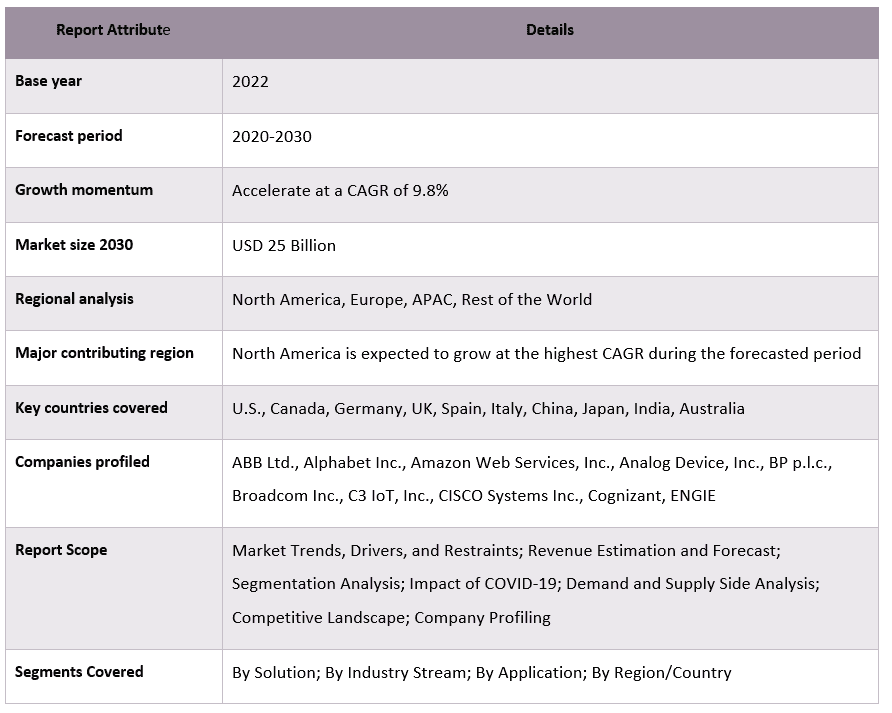
“North America Caters Significant Share of the IoT in Oil & Gas Market in 2022”
The North American market is expected to register the highest growth rate in the forecast period. It is mainly owing to the factors such as the soaring adoption of AI technologies across the oilfield operators and service providers coupled with the increasing presence of prominent AI software and system suppliers and government investment in private companies for the growth and development of R&D activities are driving the demand for IOT in oil and gas in the region.
Reasons to buy this report:
- The study includes market sizing and forecasting analysis validated by authenticated key industry experts.
- The report presents a quick review of overall industry performance at one glance.
- The report covers an in-depth analysis of prominent industry peers with a primary focus on key business financials, product portfolios, expansion strategies, and recent developments.
- Detailed examination of drivers, restraints, key trends, and opportunities prevailing in the industry.
- The study comprehensively covers the market across different segments.
- Deep dive regional level analysis of the industry.
Customization Options:
The global IoT in Oil & Gas market can further be customized as per the requirement or any other market segment. Besides this, UMI understands that you may have your own business needs, hence feel free to connect with us to get a report that completely suits your requirements.
Table of Content
Research Methodology for the IoT in Oil & Gas Market Analysis (2020-2030)
Analyzing the historical market, estimating the current market, and forecasting the future market of the global IoT in Oil & Gas market were the three major steps undertaken to create and analyze the adoption of IoT in Oil & Gas in major regions globally. Exhaustive secondary research was conducted to collect the historical market numbers and estimate the current market size. Secondly, to validate these insights, numerous findings and assumptions were taken into consideration. Moreover, exhaustive primary interviews were also conducted, with industry experts across the value chain of the global IoT in Oil & Gas market. Post assumption and validation of market numbers through primary interviews, we employed a top-down/bottom-up approach to forecasting the complete market size. Thereafter, market breakdown and data triangulation methods were adopted to estimate and analyze the market size of segments and sub-segments of the industry pertains to. Detailed methodology is explained below:
Analysis of Historical Market Size
Step 1: In-Depth Study of Secondary Sources:
Detail secondary study was conducted to obtain the historical market size of the IoT in Oil & Gas market through company internal sources such as annual reports & financial statements, performance presentations, press releases, etc., and external sources including journals, news & articles, government publications, competitor publications, sector reports, third-party database, and other credible publications.
Step 2: Market Segmentation:
After obtaining the historical market size of the IoT in Oil & Gas market, we conducted a detailed secondary analysis to gather historical market insights and share for different segments & sub-segments for major regions. Major segments are included in the report as a solution, Industry stream, and application. Further country-level analyses were conducted to evaluate the overall adoption of testing models in that region.
Step 3: Factor Analysis:
After acquiring the historical market size of different segments and sub-segments, we conducted a detailed factor analysis to estimate the current market size of the IoT in the Oil & Gas market. Further, we conducted factor analysis using dependent and independent variables such as solution, Industry stream, and application of the IoT in the Oil & Gas market. A thorough analysis was conducted of demand and supply-side scenarios considering top partnerships, mergers and acquisitions, business expansion, and product launches in the IoT in Oil & Gas market sector across the globe.
Current Market Size Estimate & Forecast
Current Market Sizing: Based on actionable insights from the above 3 steps, we arrived at the current market size, key players in the global IoT in Oil & Gas market, and market shares of the segments. All the required percentage shares split, and market breakdowns were determined using the above-mentioned secondary approach and were verified through primary interviews.
Estimation & Forecasting: For market estimation and forecast, weights were assigned to different factors including drivers & trends, restraints, and opportunities available for the stakeholders. After analyzing these factors, relevant forecasting techniques i.e., the top-down/bottom-up approach were applied to arrive at the market forecast for 2028 for different segments and sub-segments across the major markets globally. The research methodology adopted to estimate the market size encompasses:
- The industry’s market size, in terms of revenue (USD) and the adoption rate of the IoT in Oil & Gas market across the major markets domestically
- All percentage shares, splits, and breakdowns of market segments and sub-segments
- Key players in the global IoT in Oil & Gas market in terms of product offered. Also, the growth strategies adopted by these players to compete in the fast-growing market
Market Size and Share Validation
Primary Research: In-depth interviews were conducted with the Key Opinion Leaders (KOLs) including Top Level Executives (CXO/VPs, Sales Head, Marketing Head, Operational Head, Regional Head, Country Head, etc.) across major regions. Primary research findings were then summarized, and statistical analysis was performed to prove the stated hypothesis. Inputs from primary research were consolidated with secondary findings, hence turning information into actionable insights.
Split of Primary Participants in Different Regions
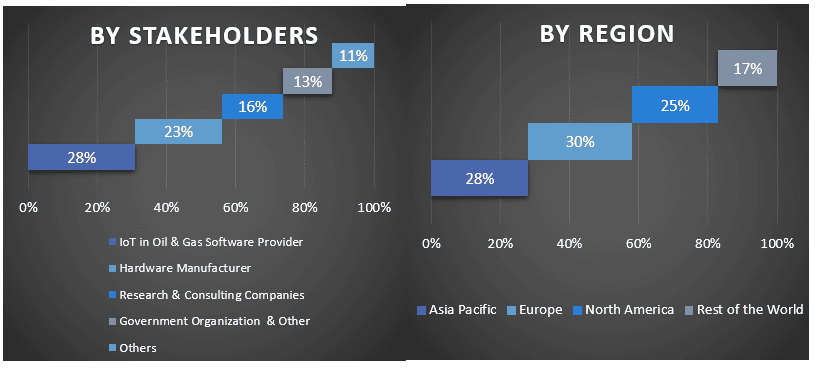
Market Engineering
The data triangulation technique was employed to complete the overall market estimation and to arrive at precise statistical numbers for each segment and sub-segment of the global IoT in Oil & Gas market. data was split into several segments & sub-segments post studying various parameters and trends in the areas of the solution, Industry stream, and application in the global IoT in Oil & Gas market.
The main objective of the Global IoT in Oil & Gas Market Study
The current & future market trends of the global IoT in Oil & Gas market were pinpointed in the study. Investors can gain strategic insights to base their discretion for investments on the qualitative and quantitative analysis performed in the study. Current and future market trends determined the overall attractiveness of the market at a regional level, providing a platform for the industrial participant to exploit the untapped market to benefit from a first-mover advantage. Other quantitative goals of the studies include:
- Analyze the current and forecast market size of the IoT in Oil & Gas market in terms of value (USD). Also, analyze the current and forecast market size of different segments and sub-segments
- Segments in the study include areas of the solution, Industry stream, and application.
- Define and analysis of the regulatory framework for the IoT in Oil & Gas industry
- Analyze the value chain involved with the presence of various intermediaries, along with analyzing customer and competitor behaviors of the industry
- Analyze the current and forecast market size of the IoT in Oil & Gas market for the major region
- Major countries of regions studied in the report include Asia Pacific, Europe, North America, and the Rest of the World
- Company profiles of the IoT in Oil & Gas market and the growth strategies adopted by the market players to sustain in the fast-growing market
- Deep dive regional level analysis of the industry
Related Reports
Customers who bought this item also bought


